When your child gets married, it is a very special day. When your child gets married to someone from another faith, it gives the occasion another dimension. For us, this meant a fresh perspective on what marriage means and the privilege of taking part in a whole new experience.
My son Greg’s new wife, Genevieve, is Jewish. She is not especially orthodox and her parents were also mixed faiths (Christian and Jewish), but she wished to honour her mother’s heritage in the rituals. To help us better understand what to expect, she kindly suggested a book I should read. I’m glad I did. It made the experience less baffling and more beautiful.
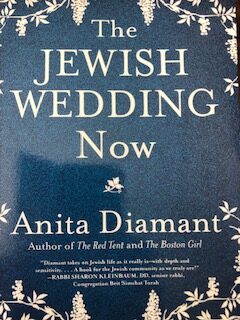
The Jewish wedding
The Jewish wedding, like its Christian counterpart, is about the joining of two people into a family bond. And in each faith, this bond is part of a larger community in which it offers hope for the future. Perhaps this is in the form of children or perhaps a commitment – as Greg and Genevieve made in their vows- to play their part in making the world a little gentler and kinder place.
Unlike in a Christian wedding, the legal part of the signing and witnessing of the marriage comes first. Under Judaic law, a couple is married when they freely pledge themselves to each other and are witnessed by two individuals who are not related to them.
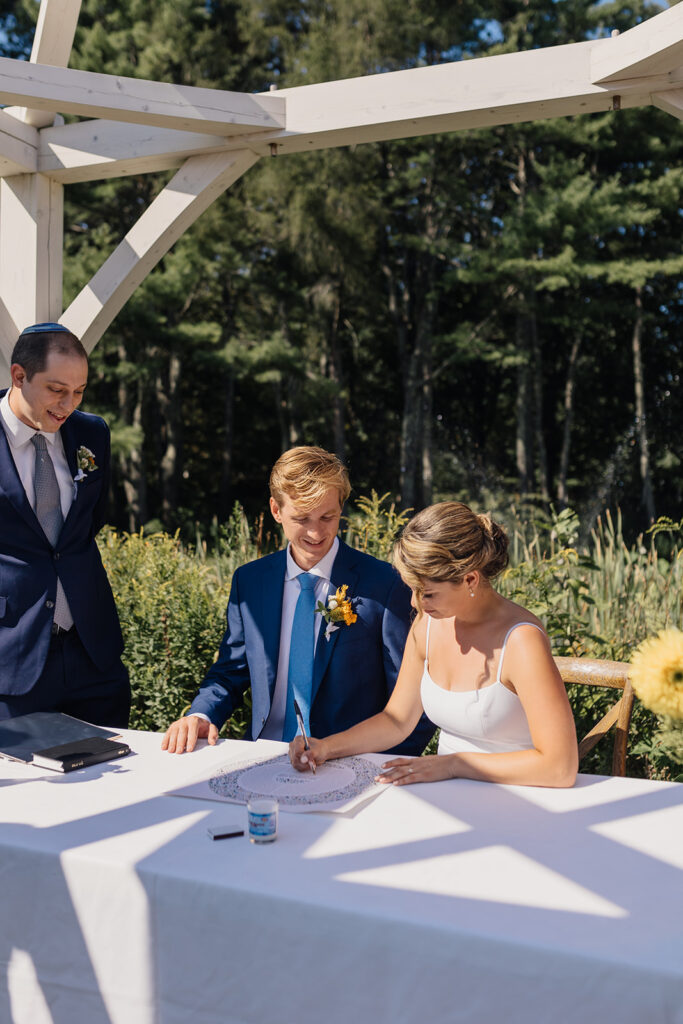
Only immediate family, witnesses and the rabbi were present for this event. The parents gave their blessings, the rabbi gave a brief and beautiful speech, and the ketubah (Jewish wedding contract) was signed.
The ketubah
When I was married, we were escorted to the rear of the church to sign the register, which would remain in the building, as a record, in perpetuity. In contrast, the ketubah is kept, and often framed, by the married couple. It could take any form, but is usually an exquisitely illustrated piece of calligraphy.


The main event
The business element of the marriage over, it was time for the ceremony proper. I was delighted to discover that the parents of both the bride and groom had a role to play. We were to walk Greg down the ‘aisle’, which here was the path between the seats in a perfect, woodland setting.
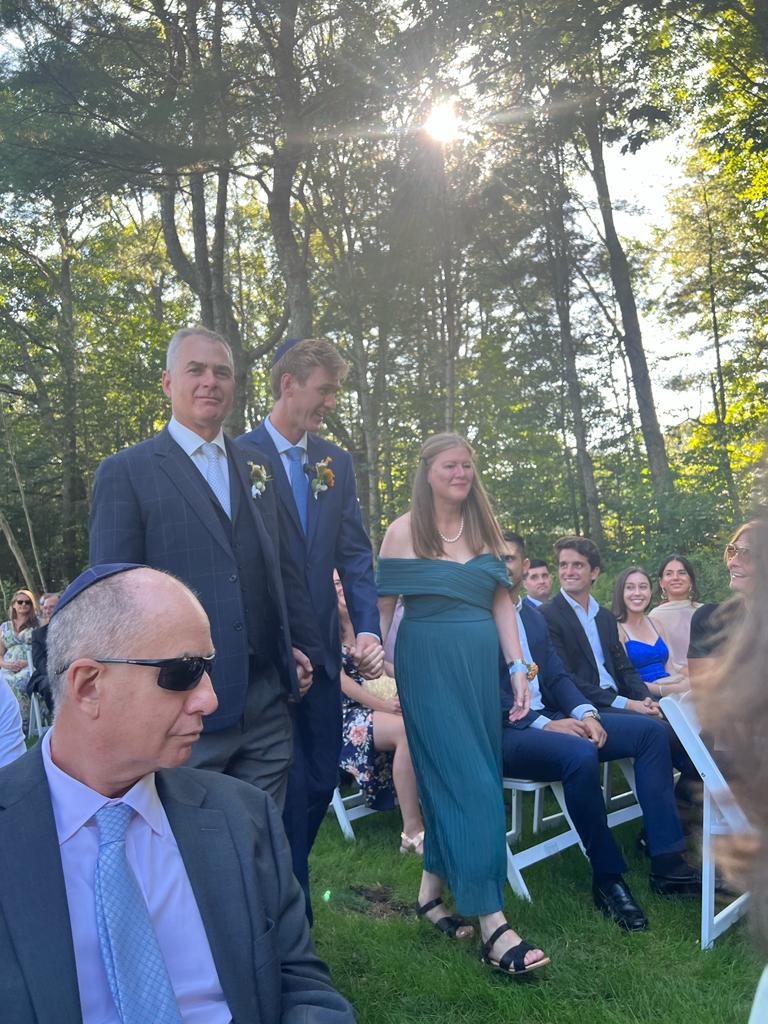
I think Greg gripped my hand as tightly as I did his – partly to assuage our nerves and partly to avoid his mother tripping on the uneven grass.
The chuppah
Our destination was not the altar but the chuppah (pronounced hoopah). This canopied space is built by the groom. (I was very impressed with my son’s carpentry skills.) It symbolises the marriage home with God (the cloth) sheltering them above. Being fully accessible, it promises hospitality to all those who visit.
It is a fragile structure though, and the parents and family who stand beside it are seen as those who will support the home in future.
But I get ahead of myself.
Before the wedding ceremony, there came the ring bearer and the flower girl. The ring bearer was Greg and Genevieve’s very well behaved dog and the flower girl my granddaughter. Both performed their duties flawlessly and elicited a huge round of applause!

But they could not outdo the beauty of Greg’s bride, who arrived on her father’s arm and we were ready to begin.
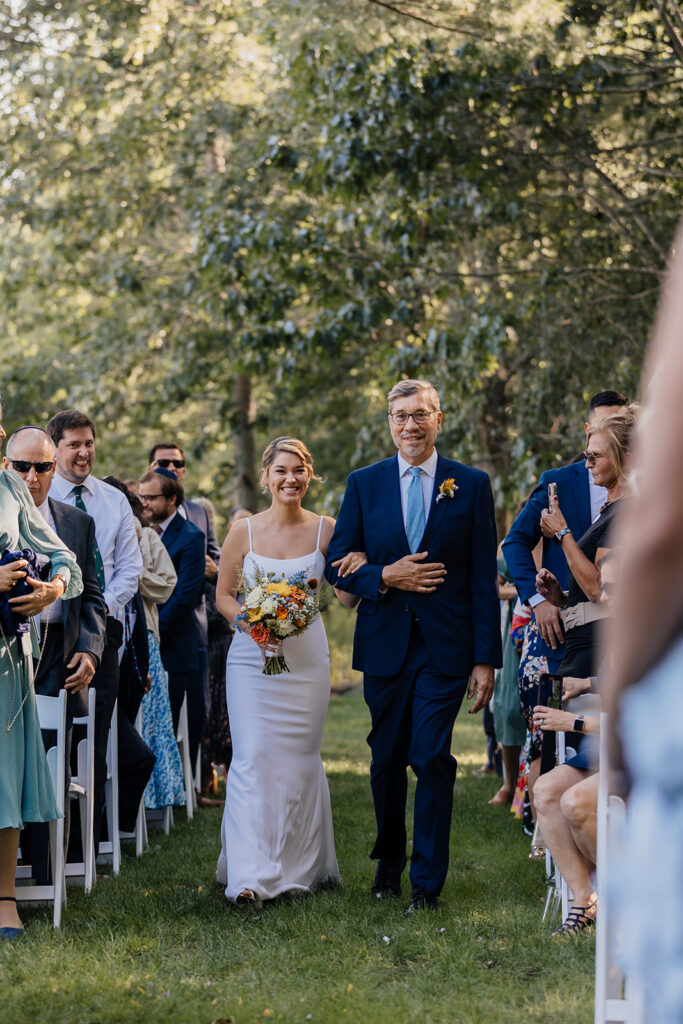
The service
When Genevieve asked my husband what was the best part of the whole wedding festivities, he said without hesitation, the service itself. I could not but agree. The rabbi, Tyler, was so perfect and attuned to the couple that it was a very moving event.
As is common in Jewish weddings, it is recognised that not everyone can attend. Loved ones who died before the ceremony are acknowledged and remembered. With Genevieve’s loss of her mother being so recent, Tyler made every effort for her to be remembered on her daughter’s very special day. I confess, it did lead to quite a lot of eye wiping. By including Laurie, rather than politely ignoring her absence, we were all able to welcome her in spirit.
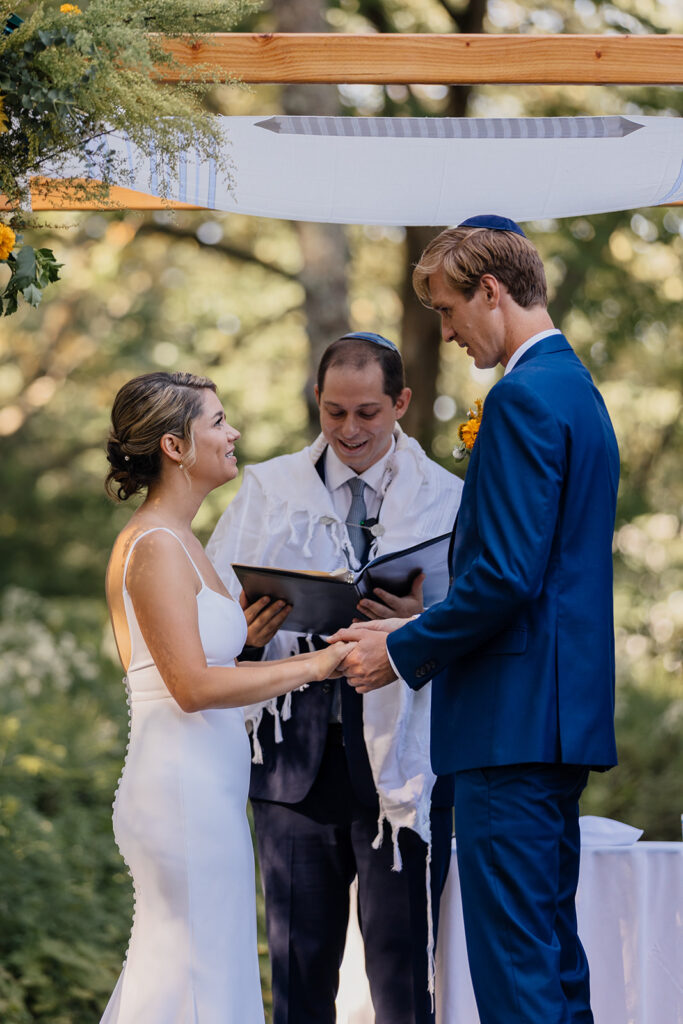
Joy in sadness/sadness in joy
More often than not, weddings focus on some unrealistic, perfect future. Life is never perfect and suggesting that it should be only results in disappointment. The Christian vows remind us of this when we promise to love and cherish each other through all of life’s vicissitudes – ‘For better, for worse; for richer for poorer; in sickness and in health’.
Tyler spoke of how life is often expressed as an oxymoron – with contradictory emotions often experienced simultaneously. Even in grief, we can feel joy.
The Jewish story is hardly a happy one, filled as it is with persecution and diasporas, yet joy is seldom far from a Jewish gathering. The breaking of the glass at the end of the ceremony symbolises this. The broken glass represents the broken world, which marriage and joyful union hope, in their own small way, to heal.
Mazel tov!
The breaking of the glass signals the end of the ceremony and everyone shouts ‘Mazel tov’ or congratulations to the newly wedded couple.
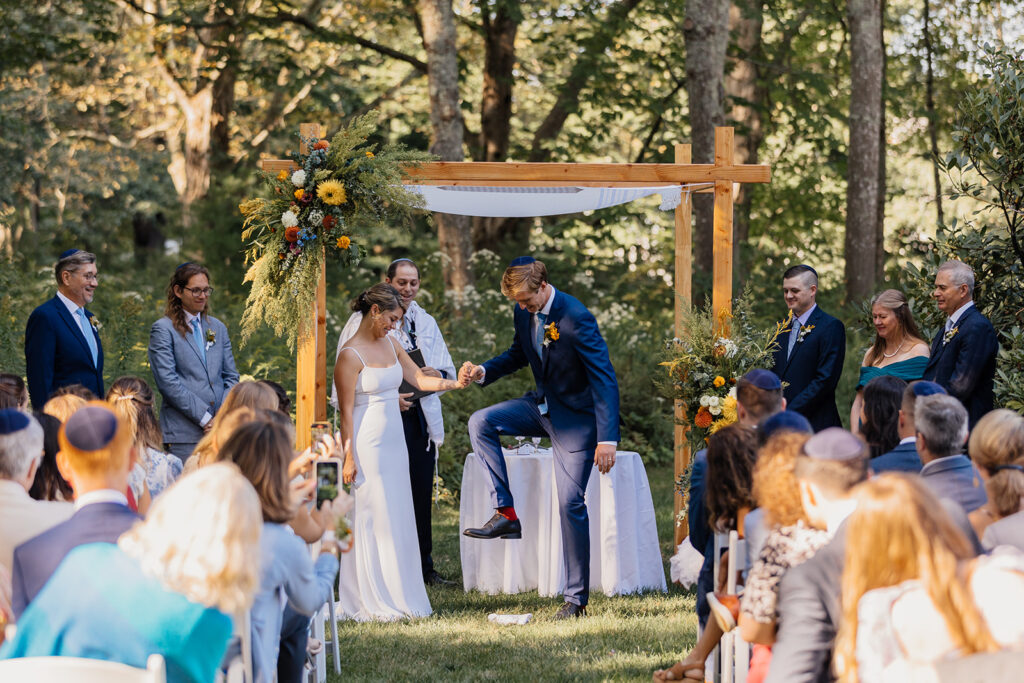
The serious work over, it was time for feasting and dancing. Greg and Genevieve were given a brief respite before the dinner to reflect on the ceremony and perhaps even grab some refreshment. I love that this pause is given to the bride and groom on what is otherwise a whirlwind of a day.
Friends, family, and feasting
Let’s just say, with an open bar, delicious canapes and food, the next part of the day passed very happily. We caught up with friends and family – many who had come a very long way to celebrate with us.



The speeches were well-structured and witty and I was especially proud of my younger son, who managed to combine some gentle British style humour without shocking the American guests. (Outrageous best man speeches are a purely British invention.)
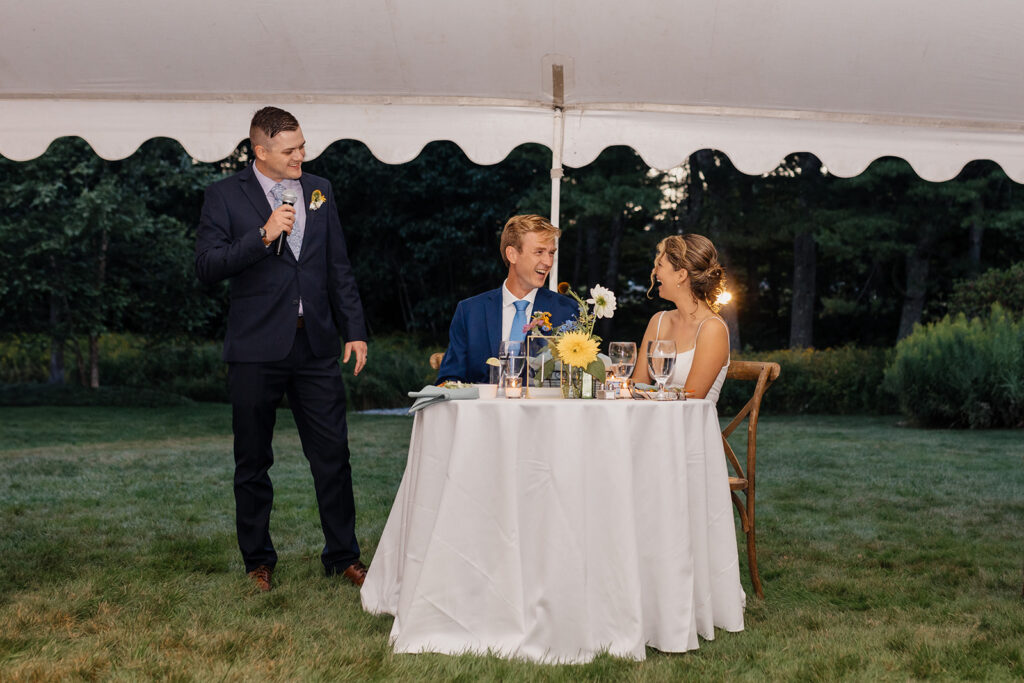
Time to dance
The meal over and the cake cut, it was time to dance. Genevieve’s father and she began and Greg and I followed. After then is was everyone. I’ve never seen a dance floor fill so quickly and remain full throughout the evening.
Of course, no Jewish wedding would be complete without the hora. The young ones danced in circles whilst the bride and groom were hoisted into the air on their chairs. It might have been more enjoyable had I not feared either of them taking a tumble. But all was well.
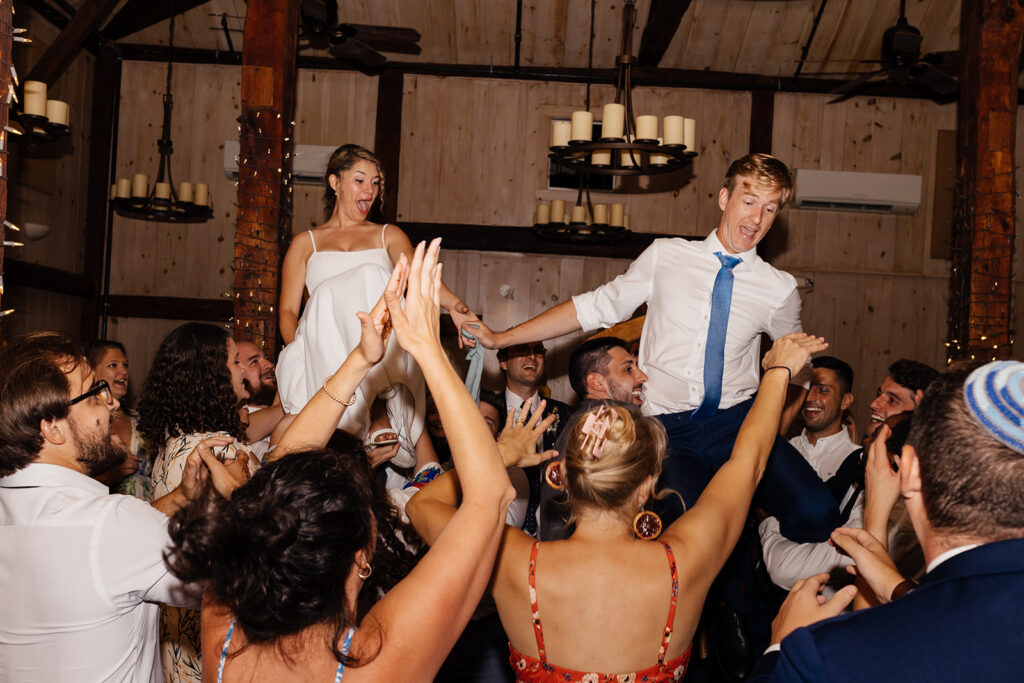
Finally, exhausted, we headed home, leaving the younger ones to enjoy the remains of the evening.
It had been a perfect day and I truly hope only the first of many for my son and daughter-in-law.
